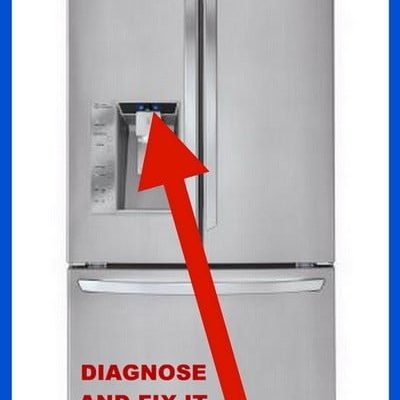
Error code E2 is typically related to a malfunction in the refrigerator’s fan, which plays a crucial role in circulating cool air. It’s like having a ceiling fan in your room; when it stops working, the air doesn’t move around, and things can heat up quickly. Ignoring this error code might not cause immediate chaos, but it’s like leaving your room fan off during a hot day—it’ll eventually become uncomfortable. Therefore, understanding and addressing this issue promptly can ensure your fridge continues to function properly, saving you from potential headaches down the line.
Understanding Error Code E2
So, what does the E2 error really mean? In the world of LG refrigerators, an E2 code usually indicates a problem with the evaporator fan. The evaporator fan is a critical component situated within the appliance that ensures air circulates throughout the refrigerator. Think of it like the heart of your cooling system; without it, the cold air can’t move, and areas within the fridge can become uneven in temperature.
When the evaporator fan fails, some sections of your fridge might stay cool, while others become warm. This inconsistency can lead to food spoilage or weird smells, akin to leaving milk out on a countertop for too long. The E2 error code is your appliance waving a little red flag, hinting you to address the problem before it balloons into a bigger issue that could affect your food storage and even your wallet.
Addressing the root of the E2 error is crucial. It could be a simple electrical glitch, a wiring problem, or a burnt-out fan motor. Each scenario requires a different approach, but none should be ignored. While you might initially think, “Can’t I just turn it off and on again?”—much like rebooting a laptop—such a temporary fix might not resolve the underlying cause. Hence, taking the time to understand this error code could help maintain your refrigerator’s peak performance.
Steps to Diagnose and Fix the E2 Error
When you’re ready to tackle the E2 error, it’s important to approach it step-by-step. First, ensure your refrigerator is unplugged to prevent any electrical accidents. Safety first, always! Next, locate the evaporator fan behind the back panel of your refrigerator. This might require you to take apart certain sections, so patience and a Phillips screwdriver will be your best pals here.
Once you have access, inspect the fan for any visible obstructions or damage. Dust and debris can sometimes clog the blades, similar to how hair might tangle in the bristles of a brush, causing it to stop. If the fan appears stuck, gently clean around it to remove any blockages. This could magically spring it back to life and clear the error code. However, if the fan motor seems fried or beyond a bit of TLC, it might be time to consider replacing it.
Finally, after addressing visible issues, plug your fridge back in to see if the E2 error persists. If it does, it’s potentially a deeper electrical issue, and reaching out to a certified LG technician would be your wisest move. They can delve into wiring and components that, let’s be honest, are better left to the pros. Remember, ignoring this error could spell bigger problems, akin to ignoring a car’s check engine light—you’re running the risk of more significant, costly failures.
Preventative Measures to Avoid Future Errors
Once you’ve resolved the E2 issue, it’s natural to wonder how to avoid such hiccups in the future. Like regular car maintenance, taking some preventative steps can keep your fridge running smoothly. Start by ensuring your refrigerator is situated in a well-ventilated space. Adequate airflow can prevent overheating, which sometimes causes components like the evaporator fan to malfunction.
Regular cleaning of your refrigerator’s interior and the area around the fan can also prolong its lifespan. Dust off any coils and ensure the fan isn’t obstructed by stray food items. Much like cleaning the lint trap in your dryer, this simple task can ward off potential problems. Furthermore, keep an ear out for unusual noises or vibrations, which could be early indicators of fan issues.
In conclusion, treating your fridge to a little TLC every now and then can go a long way. By addressing problems promptly and taking steps to prevent them, you’ll ensure your trusty kitchen appliance continues to serve you efficiently. Remember, a little attention now can save you from significant repairs later. If in doubt, consulting with a professional can give you peace of mind and keep your refrigerator humming happily.
